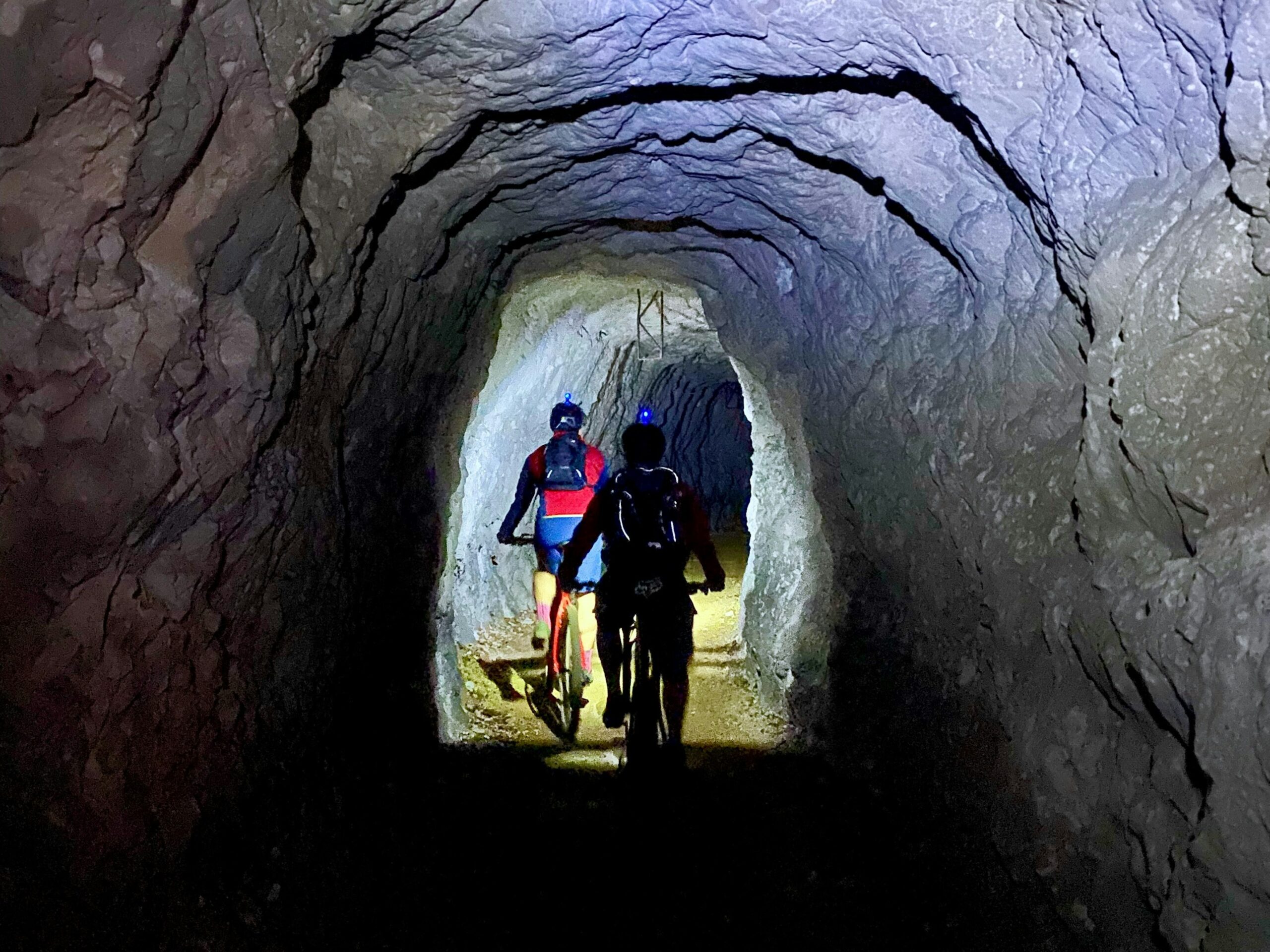Slovenia’s remote Koroška (Carinthia) region, a mountainous area running along the country’s northern border with Austria, is firmly off the beaten track. Even for Slovenians, this traditionally industrial district feels out of the way, and most visitors come to see the unique experiences around Unesco-listed, cross-border Karavanke Geopark. However, this under-the-radar region offers a wealth of adventures for intrepid travelers, and my guide for the journey – Matej Kandare – promised several days filled with excitement.
On this day, a trip to Koroška’s Mežica Mine, a former lead and zinc extraction facility buried deep within a 7,000ft (2,125m)-high outcropping called Mt Peca, was planned. I expressed polite interest – how exciting can a lead mine be? Little did I know that I was about to embark on an adventure I would remember for the rest of my life.
The ‘Valley of Death’
We arrived on a sunny, early-summer morning. Over coffee, I learned about the mine from one of the coordinators of the Geopark, Suzana Fajmut Štrucl, and mine guide Marko Ivčić. The mine was a bountiful source of lead ore and rare minerals from Roman times until the end of the last century. Over the centuries, nearly 600 miles (1,000km) of excavation tunnels were burrowed into the mountain to a depth of nearly 3,300ft (1,000m).
Working conditions for the miners were so harrowing that the mine and surrounding areas became known as the ‘Valley of Death.’ My ears perked up at that last part, but my hosts assured me that the mine was perfectly safe for a tour.
I was still unsure about the day’s activities until I saw Marko wheel over a couple of mountain bikes, along with helmets and miner-style headlamps. With a smile, he shared the plan for the morning: explore the upper reaches of the mine by bike, followed by an afternoon descent to the lowest levels by train, culminating in kayaking along the spring water lakes that have pooled half a mile (800m) below ground.
A twinge of claustrophobia hit me, but it was quickly overridden by a surge of curiosity.
Under-the-Mountain Biking
A blast of cold air greeted us as we pushed open the heavy metal doors to the mine and walked our bikes inside. Temperatures below ground hover around 50 degrees Fahrenheit (10 degrees Celsius) year-round, and we were dressed in spring jackets to stay warm. Our eyes needed a couple of minutes to adapt to the darkness. Marko started the ride off slowly to allow us to adjust to the narrow, uneven terrain and low-hanging ceilings. Eventually, he picked up the pace, and the exhilaration of cycling inside a mountain set in.
The surface was rock-strewn but flat; the length of the trail, about 3 miles (5km), was suited to a confident beginner or intermediate rider (and children over the age of 10). Advanced mountain bikers could tackle the mine’s more challenging track, ominously dubbed the “Black Hole,” which twisted through the mine’s narrower passages.
Every ten minutes, Marko paused to point out features of the mine: giant caverns of natural beauty and rusted buckets of ore that testified to the daily struggles of miners. Occasionally, he pointed to veins of white, gem-like calcite or rarer, rust-brown wulfenite still embedded in the walls. After an hour of riding, we re-emerged, smiling, albeit temporarily blinded, into the bright summer sunshine.
Underground Rails and Reservoirs
For the afternoon adventure, Suzana had promised a train trip. However, instead of a comfortable ride, we climbed into a tiny box-like carriage, windowless and securely locked. These carriages, no wider than the length of my arm and only a few feet long, used to transport as many as eight miners at a time down to depths of 1.8 miles (3km) below the surface. The cramped quarters made me appreciate the educational aspect of our adventure; many men worked in these conditions.
Once inside the mine, we donned helmets, headlamps, and gloves, descending a further 600 steps to reach the chamber’s low-lying pools of fresh water. Here, we paused momentarily to put on chest-high waders to shield us from the chilly (43°F / 6°C) water. After another careful descent along damp, concrete steps, we walked into the water and retrieved our kayaks.
For the next 45 minutes, we were free to guide our boats through the narrow channels, navigating wherever they led us. At half a mile below the ground, the space felt surprisingly airy and tranquil; the silence was only broken by our laughter and the rhythmic sounds of paddles dipping into clear water. The glow of my lamp reflected off the water, casting shades of green and blue, and I experienced a fleeting urge to dive in (only to remember the temperature).
This moment was undoubtedly unforgettable.
Practical Information
Activities at the mine are not recommended for those with severe claustrophobia, children below the age of 12, or individuals without at least an intermediate level of fitness. The mine is best reached by car. Advance reservations are required for all excursions. There are plenty of other unique adventures in the Koroška region, including visits to historical sites and natural attractions.





